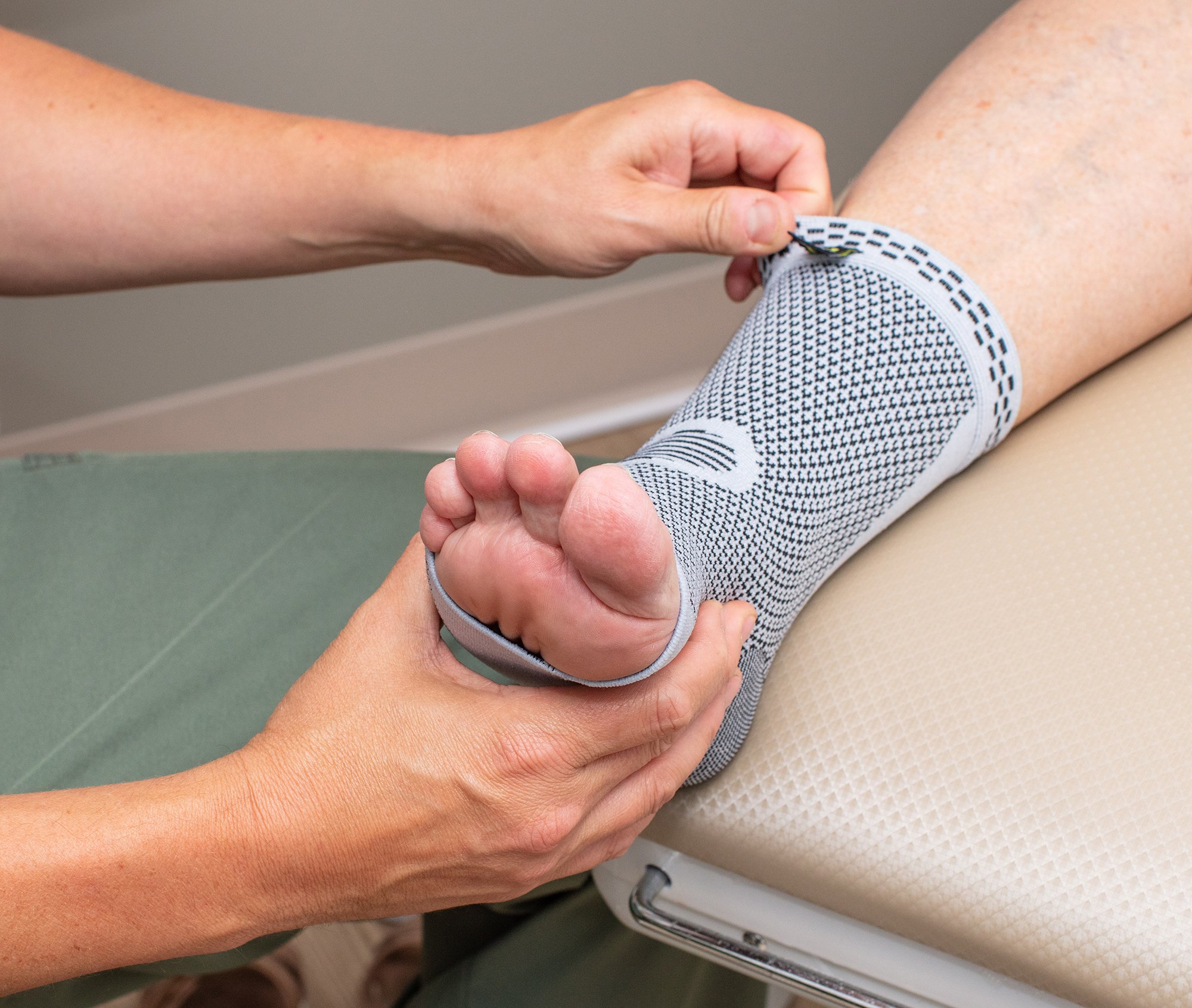April is National Foot Awareness Month, and what’s a better time for Dr. Barnett to discuss the often preventable overlooked problems millions of people struggle with. We will throw out several googleable terms that are common searches, debunk misinformation and outline the ways to prevent these issues or resolve them quickly. Part One will be the dreaded “Heel Pain”

Heel Pain
One of the most searched terms, heel pain, is a general symptom involving pain at the bottom or back of someone’s heel. It could be in the morning, after rest, during runs, or after a long shift at work.
The most common diagnosis on the bottom of the heel is plantar fasciitis, while the back of the heel is Achilles tendinitis. Both are caused by tight calves, unsupportive shoe gear, or constant impact on the foot, followed by intervals of rest. The direct pain is due to internal swelling that causes the pain to not resolve. In terms of heel inflammation, it usually develops over time, and becomes more scar tissue, with limited blood flow. By the time the pain sets in, the underlying cause is very hard to resolve.
Home remedies include rest, ice, frozen water bottles, heel lifts, stretch braces, and arch supports. Arnica and turmeric are effective in reducing inflammation but can take months to work. Patience with home remedies is key for heel pain
In-Office treatments include medical options such as steroid shots, pills, or creams. Holistic options abound from dry needling, special soaks, massage, and prescription “medical foods”. For more effective and safer treatments Dr. Barnett will use extracorporeal shockwave therapy, class IV laser, PRP, bone marrow aspirate injections, and amniotic tissue grafts.

To prevent heel pain, one should stretch the calf (gastroc muscle) in a static stretch 60 seconds at a time, 2-3 times a day. Good shoe support with higher “stiffer” arches with stiff soles help prevent the issue from ever becoming a problem. Prevention is key, so keep up that leg stretch. IF you are one of the unlucky ones to get heel pain, early diagnosis and treatment are important.
Dr. Barnett will do ultrasound testing, x rays, gait lab, and physical exam to determine how swollen and damaged the tissue is and immediately build a protocol to resolve the issue fast and effectively. The proverbial phrase of “throw the kitchen sink at it” really is relevant for this troubling condition.



